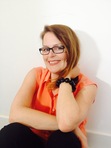Stacey D. Atkinson's Blog, page 5
June 20, 2014
Finding a niche market for your book
Every book has a story to tell, and every story has a reader. Finding these readers is the challenging part for most indie authors and publishers. Yes, you can stock your book at your local Chapters Indigo bookstore or at online retailers via Kobo Writing Life and Amazon Kindle Direct Publishing, but what about the untapped niche market?
I've attended quite a few author and publisher conferences over the past few years, and I've sat in on many workshops about writing and selling books. I always get excited when I learn something new, especially when I hear about the creative ways in which authors find new audiences for their books. Here are some examples that come to mind:
- A woman who wrote a memoir/self-help book about estate planning for widows found a niche market with financial planners throughout the USA.
- A woman who wrote a book about being a blind athlete received a bulk order from an organization for the visually impaired.
- A man in northern Ontario who wrote local murder mystery fiction found a niche market in convenience stores/gas stations along the highway near his hometown.
- And finally, for me, a New Brunswick author who wrote a fiction novel based in New Brunswick, I just delivered my first box of books to Kings Landing Historical Settlement, a provincially run attraction that sees thousands of visitors each summer who pass through the largest gift shop in the province.
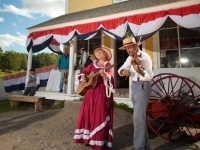
Copyright Kings Landing Historical Settlement
Here are some interesting blog posts that give more examples and ideas about finding your niche market. In essence, you need to figure out what makes your book unique and then seek out those readers.
Boost you books sales with the power of niche marketing by Alan Rinzler
The niche market: resilience in niche marketing by Pybsoft
How will you find your book’s niche target audience — by design or by chance? by Karen Jonson
Happy book selling, everyone!
Stacey D. Atkinson is a freelance editor and author of Stuck, a novel she published via her independent company Mirror Image Publishing.
June 13, 2014
Coach House Books and the art of bookmaking
Last week I toured Toronto's iconic Coach House Books and learned the art of bookmaking. For a print-on-demand girl, it was a mind-blowing experience.
What was once quite literally a coach house for horses, the Coach House Books building sits as a hidden gem nestled in a downtown Toronto back-alley, relentlessly running its printing presses and pouring out artful and thoughtful literary work. The main coach house holds the wonderfully ancient printing machines while the adjoining building holds uncountable boxes of books. Coach House Books is a publisher and printer, specializing in poetry, narrative non-fiction, and art books.
Here is a photo essay of my tour.
Zephyr paper, an unbleached milled paper from Quebec, is the standard stock used. The paper, along with the Canadian textfaces, gives every publication a decidedly Canadian touch.
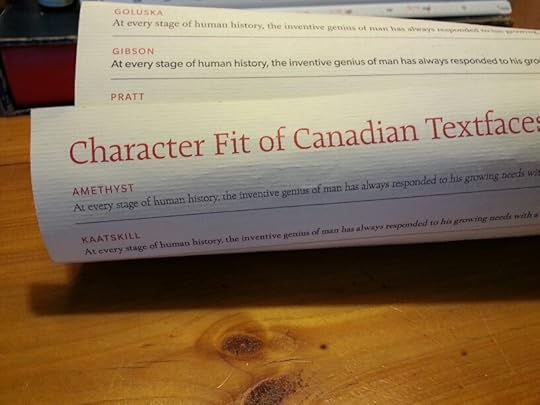
The Linotype machine, built in 1917, was the first to mechanize typesetting by melting liquid hot lead into a "slug" with raised letters to form the text for printing.
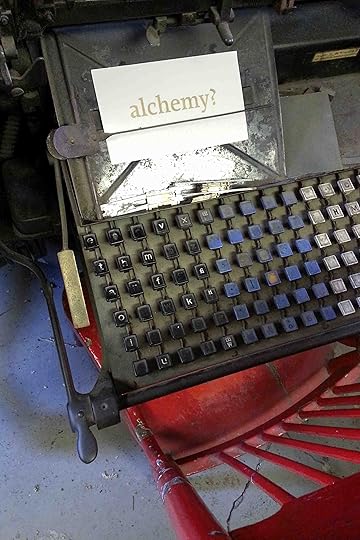
The Gordon Press was used at Coach House Books to print its very first book, Wayne Clifford's Man in a Window. It's operated by hand and foot and affectionately referred to as the in-house Stair Master exercise machine. It now serves to score covers.
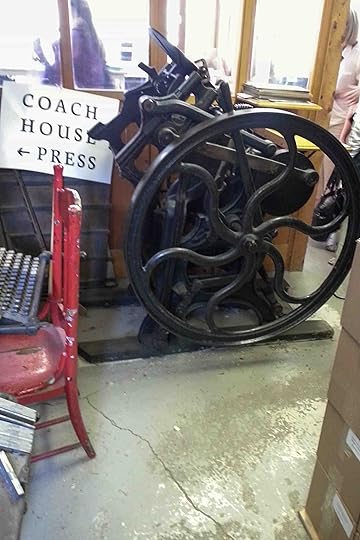
The Heidelbergs, twin offset printing presses built in the 1960s, are still used for short print runs. They are sheet fed, one at a time, and print in black and white (north press) and in colour (south press), with an artful mixing of inks and a mastery of in-house repair work.
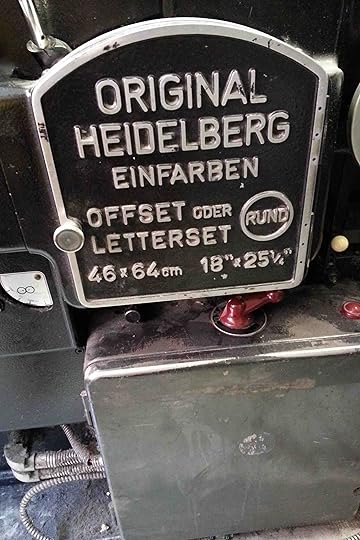
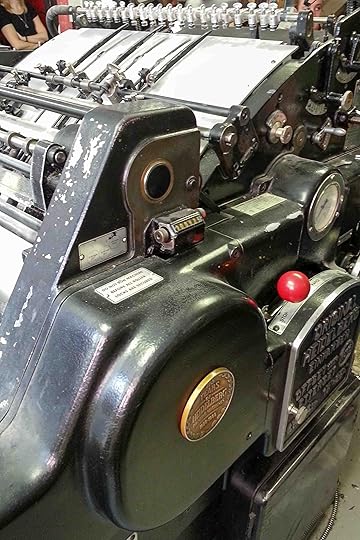

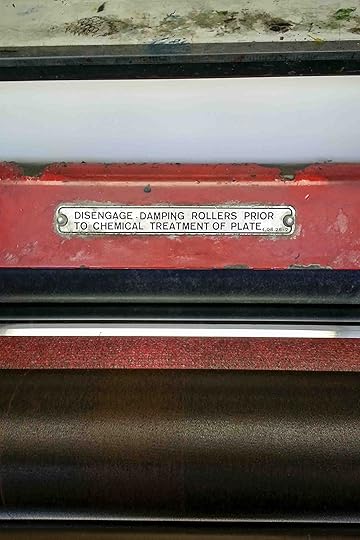
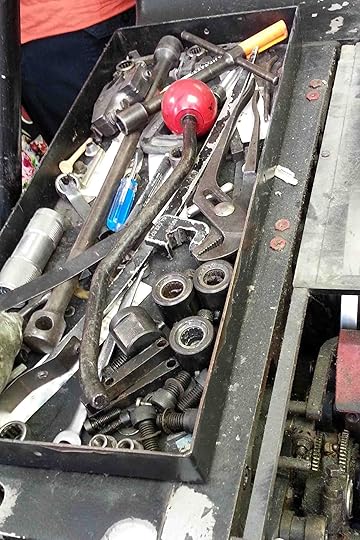
The Baum Folder machine, built in the 1950s, is where the paper-to-book magic happens. Incredibly, it folds large printed sheets into sixteen orderly pages.
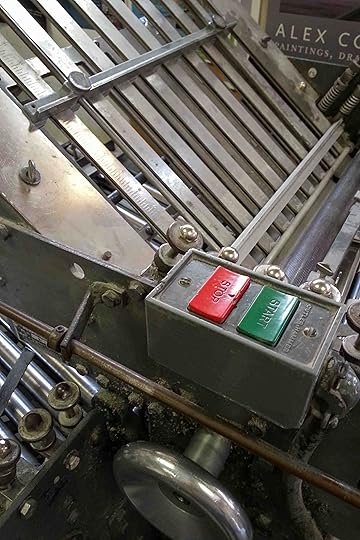
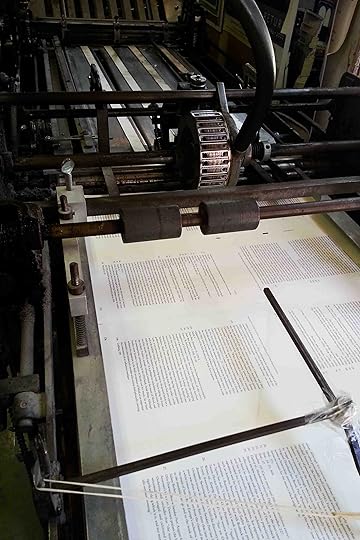
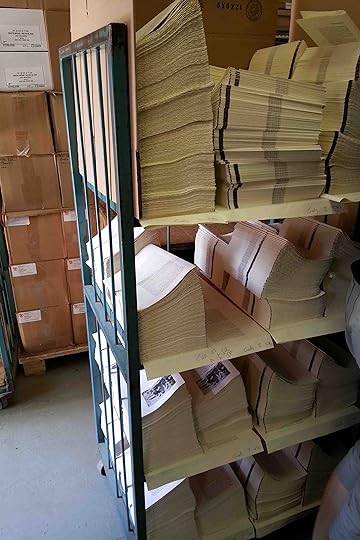
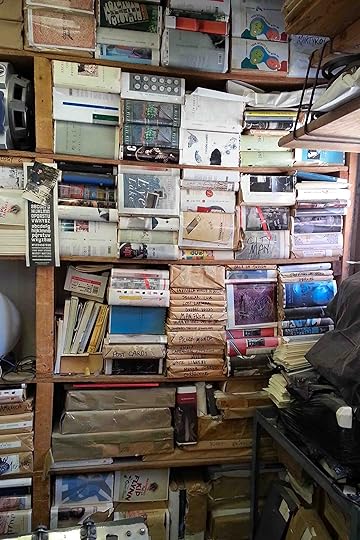
The Coffee Room is a multipurpose room on the second floor, filled with the publisher's archives and ghosts. Many a great literary figure ate, drank, slept, danced, and pontificated in this room.
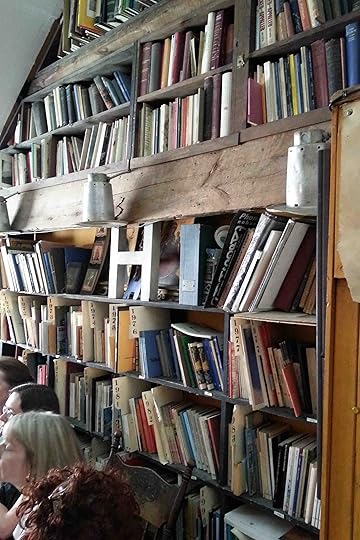
What an enlightening experience to see the art of bookmaking. Thanks to Alana, Tony, and Heidi for the tour!
Stacey D. Atkinson is a freelance editor and author of Stuc k , a novel she published via her independent company Mirror Image Publishing .
June 6, 2014
If you were a book, what book would you be?
Have you ever asked yourself, “What book am I?” I think authors have an easier time answering this question, since they are the books they write. But what about everybody else—readers, bloggers, journalists, teachers, or anyone who loves words?
If you were a book, would you be a serious read, printed in hard cover with over 500 pages? Or would you be an breezy paperback of 250 words destined for young adults? Would you be a memoir with your contemplative face featured on the cover or a contemporary novel with bold colours and playful illustrations? And don’t forget about the font—serif or sans serif? Perhaps you are a traditional Times New Roman type, a straight-talking Arial, or a more refined Garamond.
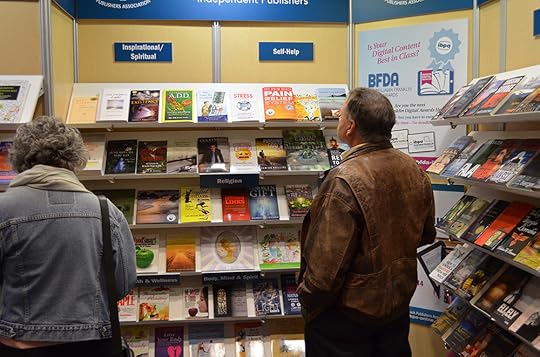
What we like to read doesn't necessarily determine the type of book we are. For example, I am definitely a contemporary Canadiana novel girl, but in the past few months I've read a gamut of books including the Mars sci-fi Red Rising by Pierce Brown, the young adult cult-hit The Fault in Our Stars by John Green, a disturbing Canadian camping novel The Bear by Claire Cameron, a beautiful story about a blind girl in occupied France during WWII in All the Light We Cannot See by Anthony Doerr, and the instructional writing book The Elements of Style by Strunk & White.
So, tell me, what type of book are you?
Stacey D. Atkinson is a freelance editor and author of Stuc k , a novel she published via her independent company Mirror Image Publishing .
May 27, 2014
Highlights of my first 24 hours at BookExpo America 2014
If you write or publish books, chances are you'll find yourself at the alter of BookExpo America (BEA), the most important author and book event in North America. It's a trade fair held at the Javitz Centre in downtown New York City, where thousands of authors, publishers, librarians, bookstore buyers, international rights buyers, and other book industry experts walk the halls in hopes of discovering the next big book. Little did I know what the first 24 hours had in store for me.
I decided to attend BEA this year to network and learn more about the book publishing industry, while trying not to get overwhelmed at the sheer size of the place. Tens of thousands of people roam the halls, visiting the endless rows of booths and the over 750 author signings. At the time of posting this blog (Friday), I'll still in the throes of the conference which runs Thurs-Sat, but I thought I'd share a glimpse of what my first 24 hours looked like.
Here's how it went...
Wednesday
Fail to clear US customs at the Toronto Airport. Get sent to secondary screening where the US customs agent tells me I’m not allowed to bring my books into the US (even after I explain they are samples and not for sale). Have a complete meltdown (ugly cry) and get sent on my way with a warning, just in time to catch my connecting flight.
Arrive at LaGuardia Airport, hightail it to my hotel in uptown Manhattan, then boot it downtown to the Javitz Center to register for the expo and add my book to the Independent Book Publishers Association (IBPA) booth display.
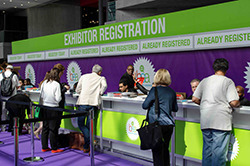
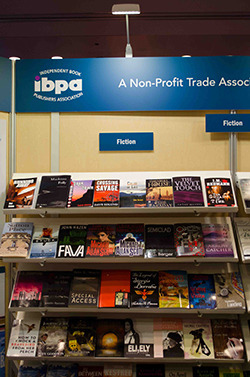
Where's Waldo?
Jump back on the subway and take the train to Kimmel Center, NYU, in Greenwich Village, for the Benjamin Franklin Book Awards. Listen to some harp music and admire the view of the city over Washington Square. Win a Silver award for best book cover design!
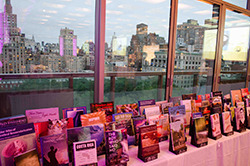
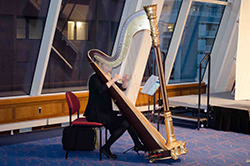
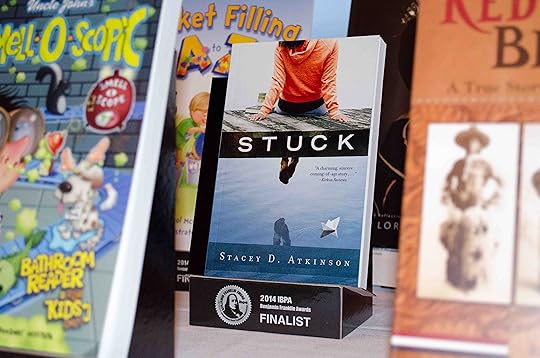
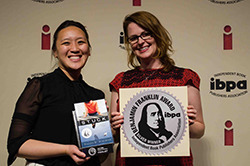
Go out to a jazz club to celebrate with my designer. Say goodnight and take the train back to my hotel. Send out a press release about the award. Go to bed!
Friday
Wake up early. Drink a protein shake then a black coffee. Repack books into my suitcase and head to day one of BookExpo America.
Hold an author signing. Talk to lots of people and hand out books. Yay!
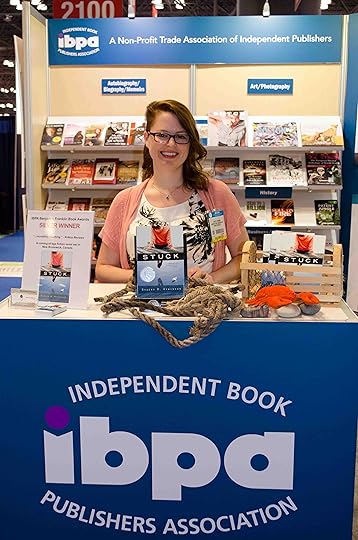
Sit for a filmed interview.
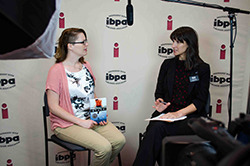
Walk around the expo halls and soak it all in. Visit the booths of some of the companies I work with and pick up swag.
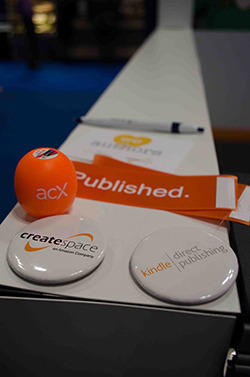
Take notes on how other authors promote themselves, namely how to pose an wear heels like Bethenny Frankel.
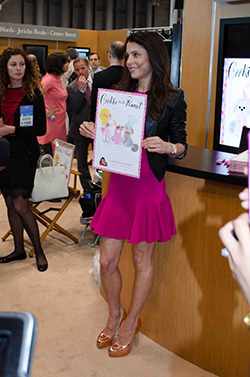
Pack my remaining books into my suitcase at 5 p.m., take the rush hour train back to my hotel, and grab some yummy New York eats: falafel and New York cheesecake. Catch up on emails and social media, while taking a much needed rest off my feet!
That’s a sneak peek at my first 24 hours at BEA. Looking forward to what tomorrow will bring!
Stacey D. Atkinson is a freelance editor and author of Stuc k , a novel she published via her independent company Mirror Image Publishing .
May 23, 2014
Networking 101: Enjoy Yourself
It's been an incredible week of networking for me: I met some interesting people and stumbled upon some great opportunities. I don't know what made this week so much different from past networking attempts. I've even taken workshops on how to network, but still, even knowing the techniques never made it any more palatable. It always felt like an exercise in dry heaving. But something changed this week. I experienced an ah-ha moment, finding myself in the throes of networking and it didn't feel like work.
A few big events coming up are what catapulted me into the ring of networking this week. The first is BookExpoAmerica, a massive trade show taking place from May 29-31. It's when the who's who of the publishing world descend on New York City to meet and greet and pitch their up-and-coming authors. I've decided to attend this year because, as an indie publisher, I still have much to learn and because my debut novel is up for an award (yay!).
Since it's my first BookExpo America, I knew I needed help and I reached out to the Independent Book Publishers Association. The folks who work there, Angela, Terry and the team, are incredibly knowledgeable and supportive, and are the reason why I'm going to have some kind of presence at the show. By networking with them, I was able to anchor myself to their booth, instead of floundering around the trade show halls like a lost mouse.
NETWORKING, UGH...
The second big event coming up is the annual conference of the Editors' Association of Canada (EAC) (June 6-8). Since I've never attended the conference before, I had no idea what to expect. To prepare, I attended an Ottawa branch meeting of the EAC, which happened to be a round-table discussion on editing mistakes, or oops moments as they call them. It was a great way to meet the group and share a lot of laughs.
At the end of the evening, I met for the first time an editor who I'd previously connected with on Facebook, and she invited me to the Ottawa Freelancers breakfast meeting the very next morning. It was a last minute invitation, but sometimes those are the best kind, and I accepted with an open mind. It turned out to be a fantastic morning, meeting other local freelancers and learning about what they do and how they do it.
I really had a great week of networking, which leaves me wondering, what made it so different from all the other events I've gone to where meeting people just felt like work? The only conclusion I have is that I found the right people who share my interests and have similar career goals. And all I did when I met them was talk and enjoy myself. I had no formal agenda or networking goal, such as passing out 10 business cards by the end of the night, something they teach you in networking workshops. But guess what? I actually did pass out some business cards and it just happened naturally, without me even thinking about it. Funny how that works, eh?
Stacey D. Atkinson is a freelance editor and author of Stuc k , a novel she published via her independent company Mirror Image Publishing .
May 16, 2014
How to write in style
Have you ever wondered if you are following the rules of grammar, punctuation, spelling, and style when you write? Perhaps you have an editor to take care of such things so you don't have to stress about it too much. But for those of us stuck in the never-ending loop of rewriting and editing our own work, here are some great style guides to know about and to have on hand for easy reference.
As we all know, writing the first draft of anything is often the toughest battle. Just keeping your bum in a seat long enough to finish writing a chapter is cause enough to celebrate. But the rewriting and editing phases are equally important. Thankfully, there are some great style manuals out there to help guide you through the process.
A great manual providing recommendations on editorial style and publishing practices for the digital age. You can purchase the hard copy or sign up for a digital subscription (which I've done) so you can use it anytime, anywhere. CMS also has a great Chicago Style Q&A that you can have emailed to you once a month as an easy way to learn from other people's style questions
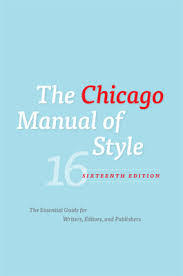
It's easy to underrate the usefulness of a dictionary by thinking it's only good for checking spelling (and who needs that when Word will do it for you!). But a good dictionary will contain all kinds of great information including a style guide, weights and measurements, historical figures and places, and standard abbreviations.
The Elements of Style by Strunk and White
A classic style manual well known in the writing world. While it is a bit dated, it offers valuable advice on English style and has helped millions of readers over the years.
Eats, Shoots & Leaves by Lynne Truss
A hilarious take on the sometimes stuffy English language, the book teaches you how to be a better writer while examining the funny results of bad writing.
How Grammar Works by Patricia Osborn
An easy-to-read, self-teaching guide on English grammar.
The Little English Handbook for Canadians by Bell and Corbett
A pocket-sized guide on English grammar and style that works as a handy little reference book.
The Copy-editor's Handbook by Amy Einsohn
A practical guide for any newbie to writing, editing, and publishing.
So there you have it! Now you can write in style by following any one of these guide. Happy writing and editing, everyone!
Stacey D. Atkinson is the author of Stuck, a novel she published via her independent company Mirror Image Publishing.
May 9, 2014
Teaching kids about self-publishing
Today I get to teach kids about self-publishing and I am so excited about it! I was invited to Fisher Park/Summit Alternative School in Ottawa to be part of Open Your Eyes Day for students in grades 7 and 8. I'll have 45 minutes for my presentation (to 4 different groups throughout the day) to give them the salient points of writing and publishing.
There are so many things I want to say to these kids. Do I tell them how hard it really is to make it as a writer? Do I share with them the inevitable rejection letters and sales slumps that pave the road of good intention? Nah, not me. I'm definitely a follow-your-dreams type of gal, so I'm going to focus on hard work and positivity. I'll tell them to write because they love to write, and not for any other reason. I'll tell them to stop listening to the critic inside their head and to let the creative voice take over.
I'll tell them not to be boring! Write something interesting and be original. I'll say start a writers' group to share ideas and edit each other's work (as an editor, I have to bring this up!). I'll explain how they need to create tension in their writing and give their characters adversity to overcome. They could start a blog to share their stories with the world and get outside feedback on their writing. I'll show them how to use Wattpad to publish stories for free. I'll explain how to publish ebooks on Kindle Direct Publishing and Smashwords, and the advancements in print-on-demand publishing with CreateSpace.
But most of all, I want to impart the wisdom I hear time and time again from accomplished writers. The two things you can do right now to be a better writer are:
Read more...
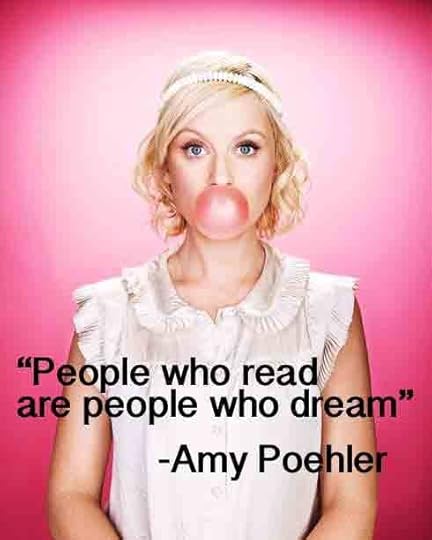
Source unknown.
...and keep writing.
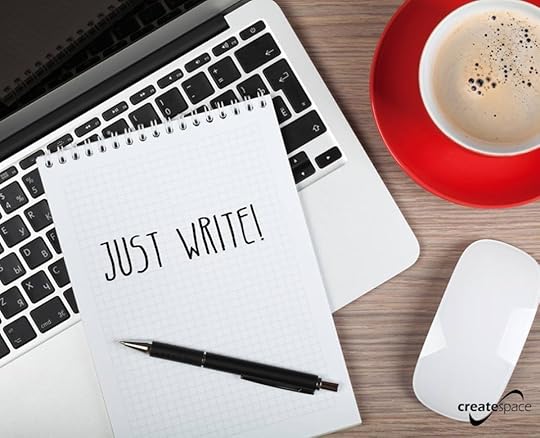
Source CreateSpace.
Stacey D. Atkinson is the author of Stuck, a novel she published via her independent company Mirror Image Publishing.
May 2, 2014
10 lovely literary tattoos
Today's blog is dedicated to lovely literary tattoos. Perhaps one day I will be brave enough to get one myself, but for now I'll enjoy them from afar on my Pinterest board.
Be inspired.
Stacey
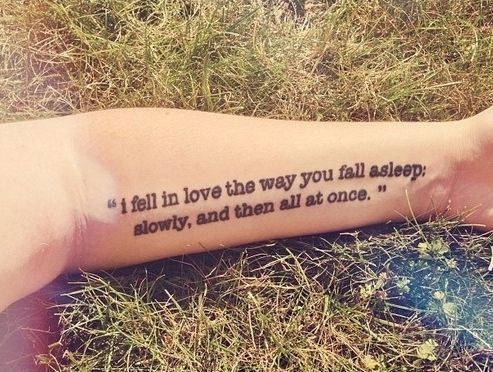
From The Fault in Our Stars by John Green. Image found on buzzfeed.com.
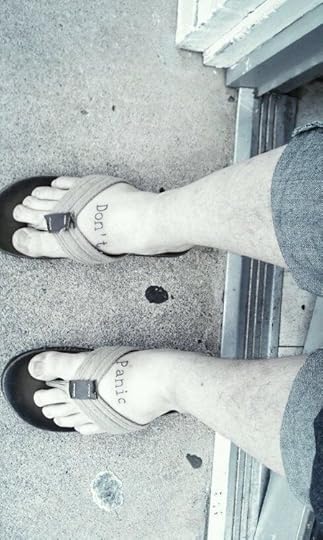
Found on buzzfeed.com
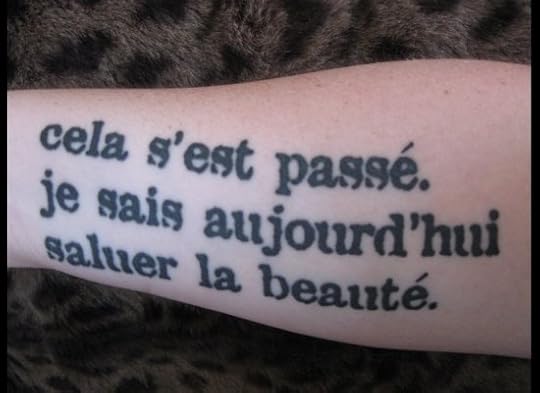
"It's over. Now I know how to greet beauty." from poet Jean Rimbaud, The Insult of Beauty. Found on literarious.com
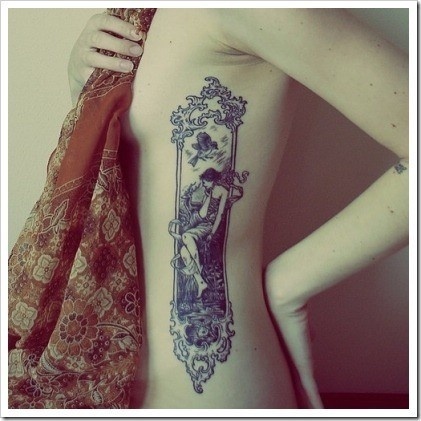
Found on weheartit.com
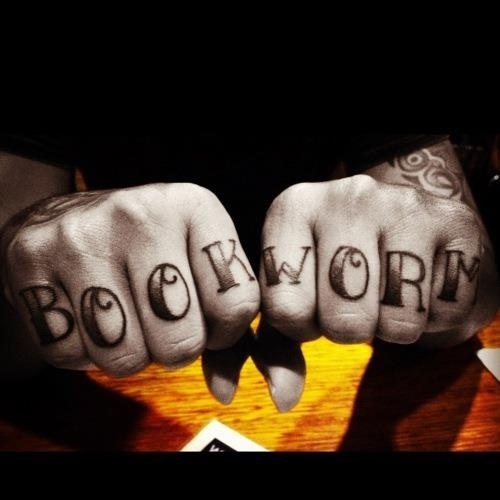
Pinterest via Brandy Ragan
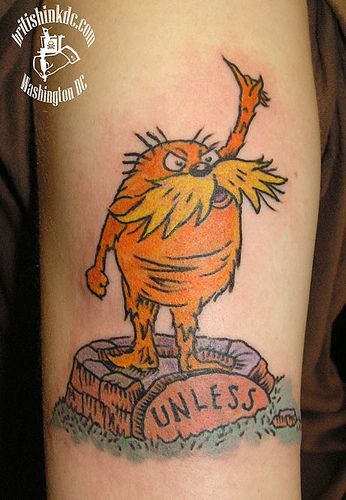
The Lorax. Found on mentalfloss.com
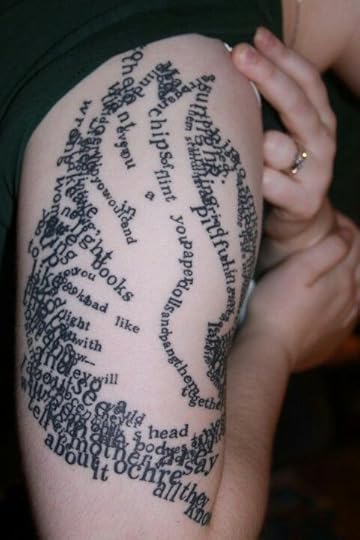
Pinterest via Jessie Wilson
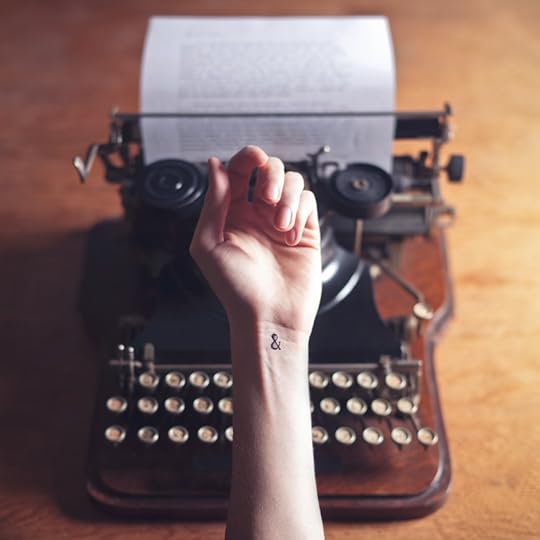
Source unknown.
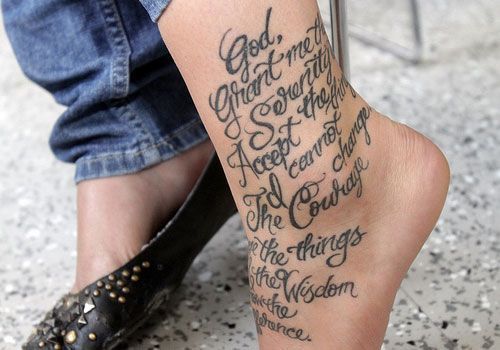
Found on creativefan.com
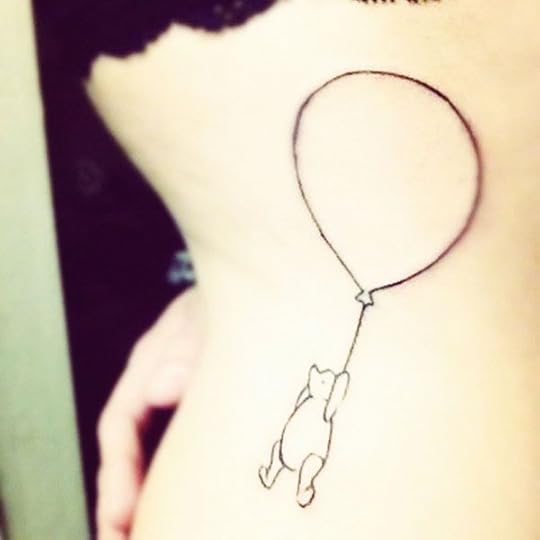
Winnie-the-Pooh. Pinterest Via Asha Grafe
Stacey D. Atkinson is the author of Stuck, a novel she published via her independent company Mirror Image Publishing.
April 24, 2014
How to prepare for your book reading event
This week I was invited to participate in Frye Festival, Atlantic Canada’s largest literary happening held each year in Moncton, New Brunswick. I was asked to give a short reading of an unpublished manuscript at an event cleverly titled Drafts and Draughts, which took place at a small coffee house-type venue at the main festival hotel, Delta Beausejour. The thought of reading a draft piece of work in front of an audience made me a bit nervous but I was excited to do it. Here’s how I prepared.
1. Scope out the venue in advance
If you have any nerves at all, you can put them to rest by simply going to see the venue where you will be speaking. Sometimes it’s the fear of the unknown that gets the best of us, but by checking out the venue in advance, you can figure out the setup for the stage, podium, lights, and audience seating.
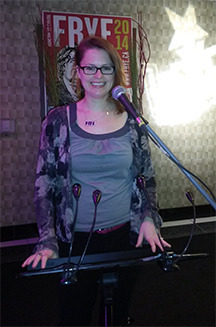
2.Choose your reading bit
Don’t be egocentric by arriving at the event and reading any old page. You need to consider your audience, the theme of the event, and how much time you’re going to have. In my case, I was asked to read an unpublished manuscript for 5 minutes. So I knew I had to find an interesting short story within my larger manuscript, one with a strong beginning and ending and emotional appeal.
3. Be part of the audience
While you’re waiting your turn to read, make sure to enjoy the event by listening to the other authors read their stories. Remember that the evening is not all about you (unless it really is all about you because you are the only author reading!).
4. Practice your reading
Just like any great vocalist, you need to practice your reading before you get on that stage. You may think that because you wrote the piece you can read it, but this is not so. All great vocalists will tell you that they warm up before performing for an audience, exercising their vocal chords and mouth, and saying tricky strings of words over and over again until there’s no hesitation or stammers.
Finally, remember to breathe. It will help with the nerves and ensure you don’t rush your words.
Happy reading, everyone!
Stacey D. Atkinson is the author of Stuck, a novel she published via her independent company Mirror Image Publishing.
April 18, 2014
Ditch the frou-frou and choose plain language instead
If you haven't heard of plain language writing, don't worry. It's not rocket science, in fact, it's rather simple and easy to do. But it does take an awareness of how you write in order to avoid confusion for your readers. For example, academic and government writing is notorious for ambiguous, jargon-thick text that is hard to read and understand. But with a few quick fixes, you can transform your text in a way that will increase the reader's connection with your message.
I first heard of plain language writing several years ago when I worked for the federal government. It was always talked about but often ignored, even by me. The government, much like any other organization, has its own nuanced language and culture, making it far too easy for employees to forget about the audience (often the public) and fail to write a clear message.
So to brush up on my plain language skills, I enrolled in a technical writing class at Simon Fraser University as part of its editing certificate program. Right away I was amazed at how serious the plain language movement is! Did you know there's an international Plain Language Association? There's also the Plain Language Network which promotes 39 steps to plain language writing. To give you a summary of writing tips, here are 10 things I learned that can help you be a better writer.
1) Figure out the main point of what you are trying to say and make sure you say it.
2) Write in the active voice, not the passive voice. Example: She locked the door at 9 p.m. vs. The door was locked at 9 p.m.
3) Use parallel construction. Example: We like to play tennis, basketball, and soccer. vs. We like to play tennis, shooting basketball, and there is soccer, too.
4) Write for your audience: use the right tone and word choice.
5) Use consistent words throughout your document (unlike creative writing which uses synonyms).
6) Eliminate unnecessary words in your sentence such as "there is," "it was, "here are," "in conjunction with," "which," and "that".
7) Avoid making verbs into nouns by adding endings such as -tion, -ment, -ness.
8) Don't be pretentious. Avoid words such as facilitate, optimize, accommodate, and concerning.
9) Don't use clichés or unecessary formalities.
10) Keep sentences short and to the point.
Happy writing, everyone!
Stacey D. Atkinson is the author of Stuck, a novel she published via her independent company Mirror Image Publishing.

